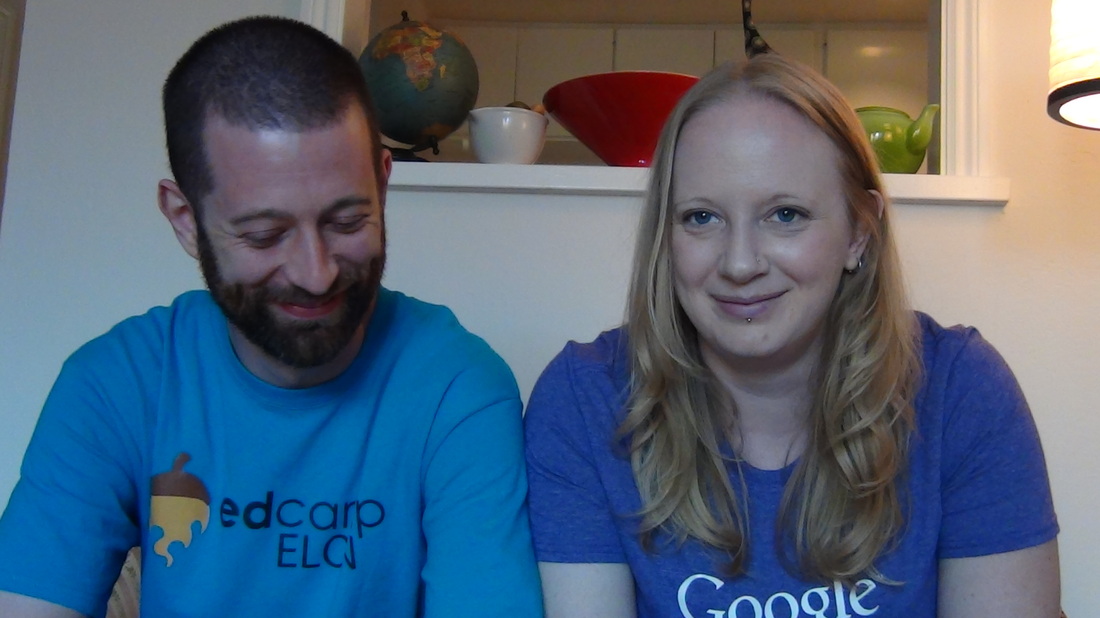So what does that have to do with teaching?
Well, what we do as teachers is about relationship and community. And while I'm not much for the cult of personality around the teacher being the Centre of The Classroom, most of us become some variety of stand-up comedian because we have a built-in captive audience.
And Ze Frank is the master of cross-curricular real-world relevant collaborative projects.
His audience made the Earth a sandwich, asked people to dress up vacuum cleaners in human clothes, tracked down a random guy (only known by his first name and his voice, and his audience found him in TWO DAYS) and made him a series of remixes of and a music video for a song he wrote called "Whip Somebody's Ass," made purposely ugly myspace pages, and so much more.
So how can you harness the power of Ze Frank's collaborative projects?
First, copy them.
After that, I give students a few tips and send them to work. We've made our own versions of Sad Cat Diary and Sad Dog Diary. We used the True Facts about Morgan Freeman and they made a True Facts about Donald Trump. We play Worst Ever using things around our school.
This is primarily about giving students enough structure to feel safe to try things out while also teaching them the basics of iMovie, using Creative Commons licensed media, and how to share and upload finished videos.
Writers learn by trying out the styles of other writers, so why not learn from people who are awesome at creative projects and media?
Another way to use Ze Frank's work is to use it as inspiration for an original creation.
We watch something together, break it down, and students then plan an original idea that is related by theme or content. We watch Nerdfight and students make a video showing their own version of a nerd fight. We watch the League of Awesome Olympics and students make their own events. We analyse the intros for the recurring segment Ride the Fire Eagle Danger Day and then create stop-motion animations or RSA-style animations of their own.
Some of my students' best work comes from these assignments. There is less structure, but enough of a focus for them to take bigger risks.
Lastly, we can learn from Ze's philosophy about learning, the creative process and happiness.
He made a video about finding ways to make yourself feel happy, and we tried out many of his suggestions, like Sad Sad Happy Tube and High-fiving the Universe. My favourite is Happy Typing, though. You can see all of those in the video I linked at the start of the post. Then students made their own games, like making a human burrito, or laughing without smiling.
Whenever the kids need a boost (especially during SBAC testing!), we pull out those activities and the mood totally changes.
I also teach students about Ze Frank's philosophy on finishing. We make finishing stamps to put on the work we're pushing out into the world.
We use his brainstorming technique on all major pieces of writing and major projects.
We use the Teen Brain video as a start to the conversation about the unique challenges and awesomeness of the teenage brain, and how that impacts learning. We also use his study strategy to learn the really important stuff.
**
I use these projects in both my Humanities class and my Digital Storytelling class. All of these can be linked to Common Core standards in English, as well as technology and design standards. Hell, a lot of them could be used for content-dense curriculum like History as well. Instead of True Facts about Donald Trump, students could do True Facts about Genghis Khan or Zheng He. Their nerd fight could be between two historical figures. Their olympic events could be actual games from history.
This slide deck hosts the curriculum with instructions and ancillary media. Please use them, and if you come up with something better than what I have, please share it back with me! If you use them in your classroom, let me know how it goes!
After all, learning *coughstealingcough* from Ze Frank is a community effort.


 RSS Feed
RSS Feed
